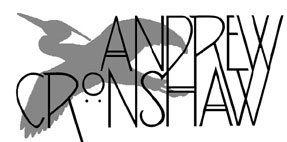
- Andrew Cronshaw website -
- Andrew Cronshaw MySpace -
- Cloud Valley Music website -
- Andrew Cronshaw website -
- Andrew Cronshaw MySpace -
- Back to Reviews Introduction page -
Written in
Folk Roots
issue 31, 1986
MARIA DEL MAR BONET
Annels D'Aigua
Ariola-Eurodisc 1-206626 (1985)
VARIOUS ARTISTS
Chansons Et Musiques Traditionnelles Du Quebec (Anthologie de la musique
traditionnelle française, vol. 7)
Le Chant du Monde LDX 74759 (1985)
LOS SABANDENOS
Misa Sabandena
Vanstory VS 3638 (1985)
UÑA RAMOS
Le Pont De Bois
Le Chant du Monde LDX 74842 (1979)
Maria del Mar Bonet has for some time been extremely popular in the Balearics
and Cataluña, and during the timespan represented by 13 albums her audience has
spread around the Mediterranean, despite the fact that she sings in Catalan.
(Presumably as European audiences can take popular music in one foreign
language, English/American, so they can take it in another.)
Her vocal style is Iberian; think of perhaps
Amália Rodriguez, Flora Purim, Lydia Mendoza and Judy Collins and you're in the
right direction. Material is in part translation, part original, and part
traditional. Accompaniments, on guitars, lutes, bouzoukis, mandolin and
percussion, are by her regular colleagues Lautaro Rosas, Javier Mas and Jordi
Rallo, joined by session musicians, and by Fethi Zhgonda's musicians from Tunis,
who contribute to the pan-Mediterranean feel with qanun, nai, tar, violin and
darbuca.
Maria del Mar Bonet is an international
performer. Though she doesn't specifically present her own tradition, her style,
language and material are strongly identified with her regional culture, and
that makes her a valuable and interesting addition to the mainstream. With her
Catalan she adds flavour, colour and intelligence to European popular music;
with her status she enhances the image and standing of Catalan.
Chansons Et Musiques Traditionelles Du Quebec
is the result of a collecting raid by 15 members of l'Association Le Bourdon on
(mainly) the county of Beauce in Quebec in July 1970.
The collecting method appears to have been, to
say the least, unsubtle and hasty. Three large villages were chosen by a native
guide, and in each of these the team (just enough for a rugger side, strangely
enough) stayed three days. On the first evening a petite féte' was held in the
village hall at which members of the team performed and to which they invited
local singers and musicians. The next two days were spent following up contacts
made during the first evening.
The results of such a collectors' club outing are
of course bound to be a part of what's there, and may well include valuable
material. The result in this case is a record not bursting with great ethnic
art, but not without value, particularly in giving a perspective on the French
tradition, much as Appalachian collections give insights into British material,
or Cape Breton into Gaelic. It's just that the method might well make a more
sensitive modern folklorist throw in the Nagra.
If mariachi music appeals, the LP by Los
Sabandenos might well. It isn't mariachi, but it has a strong mariachi
atmosphere, energetic and fun. It's Canary Island popular music, as sung mainly
at Christmas in the Basilica of Candelaria. No trumpets (apart from one note on
what sounds like a hunting horn or conch); male lead vocal and chorus,
accompanied by guitars, mandolins, lutes and exuberant rattling and thumping
percussion.
Uña Ramos plays pan-pipes and flutes in the South
American style, writes good tunes, some in the aforementioned idiom and some
with French/ Latin influence, and is excellently accompanied on charangos,
guitars and percussion by José Luis Castiniera de Dios and Narciso Omar
Espinosa. The recording, made in France, is crystalline; the sleeve is one of my
all-time favourites.
There's one thing I can't figure out, though. I
know South American pipe and flute players tend to go for a pitch on the sharp
side of the accompaniment, but Ramos pitches so sharp when playing flutes that
listening becomes uncomfortable. His pan-pipes are fine, his technique is good,
accompaniments are well in tune within themselves. It doesn't appear to be an
accident; this is a glossy studio job, not a field recording.
Exit reviewer, puzzled.
© 1986
Andrew Cronshaw
You're welcome to quote from reviews on this site, but please credit the writer
and fRoots.
Links:
fRoots - The feature and
review-packed UK-based monthly world roots music magazine in which these reviews
were published, and by whose permission they're reproduced here.
It's not practical to give, and keep up to date,
current contact details and sales sources for all the artists and labels in
these reviews, but try Googling for them, and where possible buy direct from the
artists.
CDRoots.com in the USA, run by
Cliff Furnald, is a reliable and independent online retail source, with reviews,
of many of the CDs in these reviews; it's connected to his excellent online magazine
Rootsworld.com
For more reviews click on the regions below
NORDIC
BALTIC
IBERIA (& islands)
CENTRAL & EASTERN EUROPE, & CAUCASUS
OTHER EUROPEAN AMERICAS OTHER, AND WORLD IN GENERAL
- Back to Reviews Introduction page -